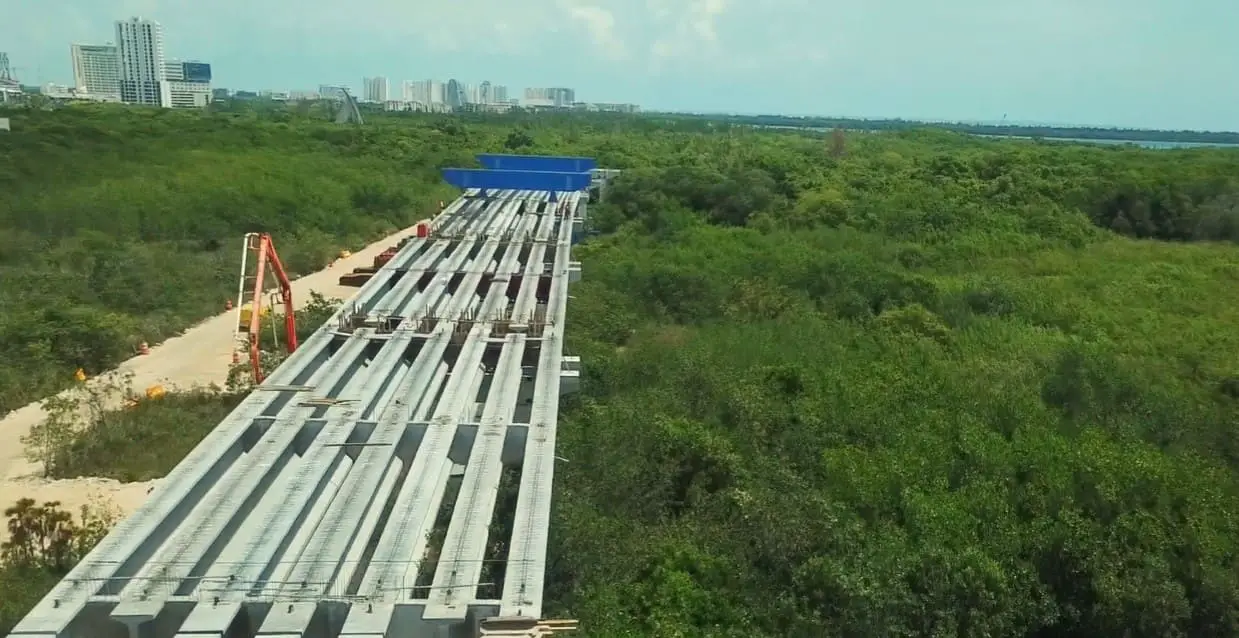Nichupte Lagoon vehicle bridge, a Cancun megaproject, is coming close to the halfway mark towards its conclusion. This update on the project’s progress was provided by the company executing the endeavor, Ingenieros Civiles Asociados (ICA).
The 8.8 kilometer long bridge, whose construction work is being carried out by ICA, is anticipated to take the traffic in the Cancun Hotel Zone, over the Nichupte Lagoon to the interior.
Also read: Second Niger Bridge in Nigeria complete, handed over to FG
The Nichupte Lagoon vehicle bridge, also known as the Puente Vehicular Nichupte, infrastructure project, according to the Mayor of Cancun, Ana Paty Peralta, has been requested by the residents of Cancun for the past 20 years.
The Mayor claims that the bridge, once completed, would link Cancun’s hotel zone strategically with Colosio Boulevard, as well as Tulum. It would also be connected to Kabah and Bonampak Avenues.
Furthermore, the bridge would provide the people with a quicker way to commute to and from their jobs. This is apart from only upgrading connectivity, job creation and providing security as expected.
How has the establishment of the Nichupte Lagoon vehicle bridge impacted the people’s lives?
The project is part of a billion peso galore infrastructure package, which is being undertaken in the Cancun city. 8,150 direct jobs and 32,600 indirect opportunities have resulted from the construction of the Nichupte Lagoon vehicle bridge. This is according to the Secretaria de Infraestructura, Comunicaciones y Transportes (SICT), the entity overseeing the project’s execution.
Construction costs
The Puente Vehicular Nichupte construction comes in at a cost of approximately 5.5 billion Mexican pesos, according to Proyectos Mexico. This is more than what they had estimated initially. The project is being financed through a public-private partnership scheme. Construction works on the project are expected to end at the beginning of 2024.
The project’s presentation
In 2021, the Nichupte Lagoon vehicle bridge project was presented by Eduardo Ortiz, the head of the Quintana Roo Strategic Projects Agency, in a virtual meeting to Rogelio Jimenez, the National Fund for Tourism Promotion director.

